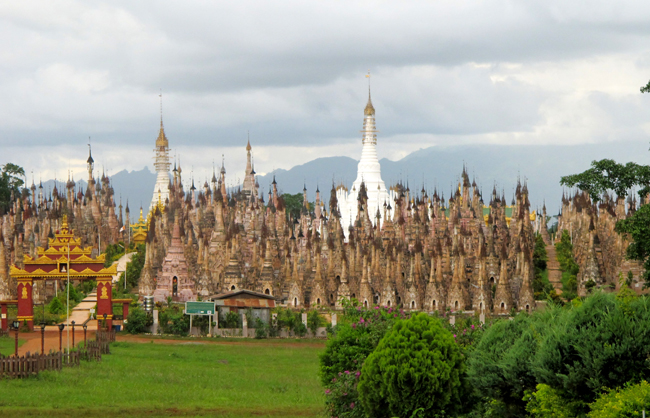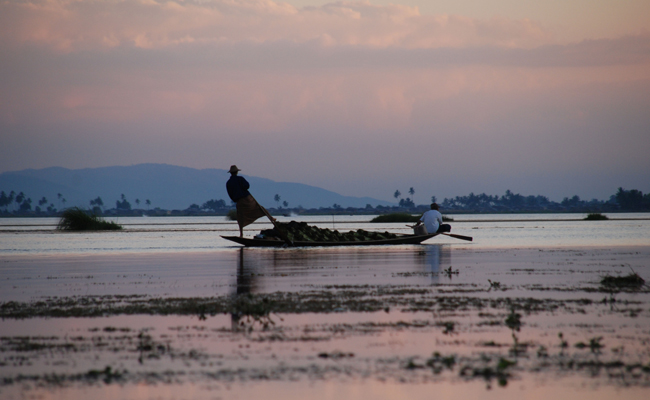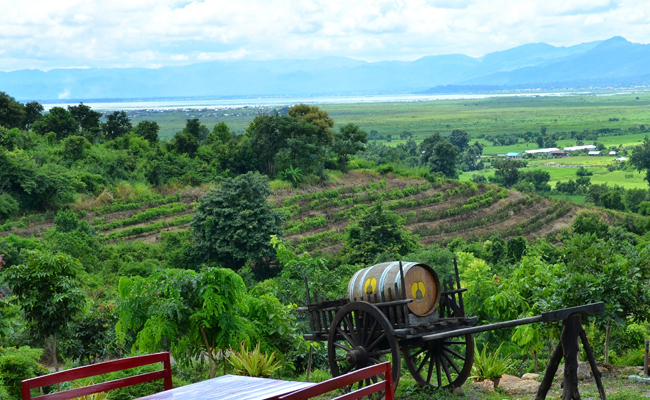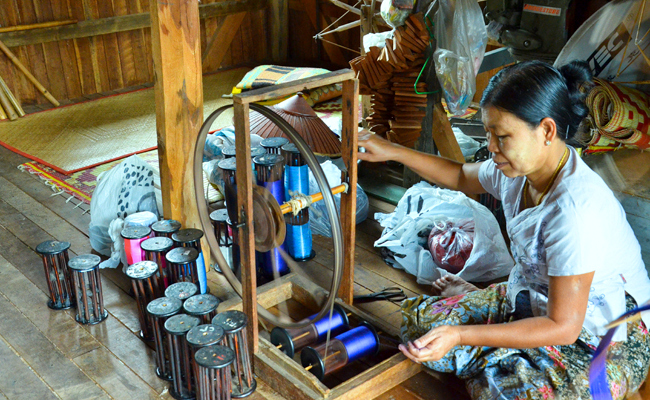Inle Lake measures 13.5 miles long and 7 miles wide. However, up close it is impossible to tell where the lake ends and the marshes start. The surface of the lake is like an endless mirror, reflecting the rays from the sky above. Stilt-house villages, Buddhist temples sitting on islands, floating gardens and Intha fishermen going about their activities with their unique technique of leg rowing. One leg is wrapped around the paddle to drive the blade through the water while the other provides balance. The area around the lake is protected by the Inle Wetland Bird Sanctuary to protect wildlife such as herons, warblers, cormorants, wild ducks and egrets. Currently it is estimated that there are 255 woodland birds, 90 wetland birds, 59 fish species, 3 turtle species, 94 butterfly species, 25 amphibian and reptile species, including 184 orchid and 12 algae species.
Other reasons to add Inle to your Myanmar Itinerary are:
Kakku

The complex of Kakku pagodas
A visit to Kakku pagodas will make your Myanmar itinerary more fastinating.
10 Different Shan Nationalities

Intha people – the Children of the Inle Lake.
There are more than 10 different Shan nationalities living in total harmony in Inle Lake. The Intha people are believed to be the Children of the Lake. The Akha live in highlands about 1,000 metres above sea level, they moved from place to place in search of fertile land. The Khun and Shan-Gyi are of Thai-Shan heritage, Khun lives to the east of the Thanlwin River while Shan-Gyi lives in the west. The Lahu-Na are good-natured and open and the men are said to be very kind to their wives. The Lahu are categorised into three subgroups – Lahu-Shi, Lahu-Na and Lahu-Ni. The Lisu people celebrate the New Year for three executive days in each village, with simple dance steps to accompany the three-stringed banjo music. The Shan-Gyi live in the valleys of the Shan Plateau and are rice farmers by tradition. The Eng are related to the Wa tribe, they are fearful of the water spirits and build their villages away from swamplands and rivers. The Akhu are a super small subgroup of the Akha people, interestingly, the entire community of attends a Baptist church service on Sunday night. Lastly, the Thai-Lu are farmers and can trace their roots to the Sip-song-pan-na of Yunnan China.
Red Mountain

Red Mountain Vineyards – Winery
Located at Aythaya, 3 miles west of Taunggyi, this vineyard – the country's first – sits at an elevation of 4290ft on well-watered, limestone-rich soils, providing good growing conditions for Shiraz, Cabernet Sauvignon, Sauvignon Blanc, Chenin Blanc and Moscato grapes. Open daily for tours and tastings.
Shan State Cultural Museum
Located at Bogyoke Aung San Road and Eintawshay Road, the museum displays divans, swords, fans, chairs used by Sawbwa (Shan Chief of former times), old paintings, coins and traditional costumes of the Shan races. It was established in March 1989 and charges visitors a small fee to maintain the museum.
Inle Lake Attractions: Traditional Floating Craft Villages

A woman spinning thread
Share This
| Tweet |
